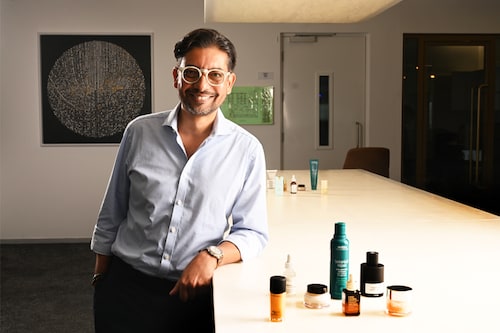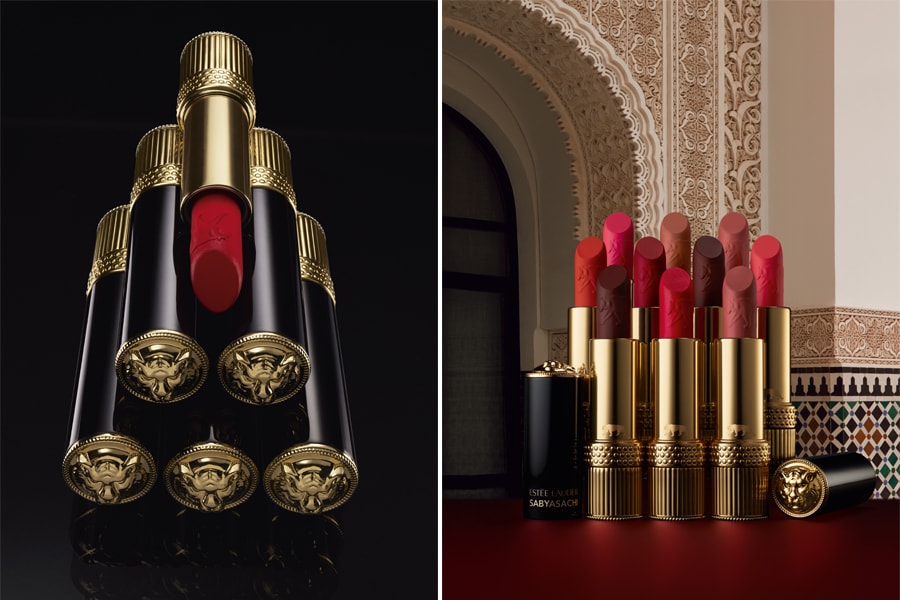'Sabyasachi was clear he wanted to play in beauty and wanted to start with 10 li
Rohan Vaziralli, general manager at ELCA Cosmetics Private Limited, on the new Estée Lauder-Sabyasachi collaboration, India's luxury market and more


On Thursday, Estee Lauder and Sabyasachi announced their latest collaboration—a limited edition set of 10 lipsticks with gilded cases adorned with 24K gold-plated accents and emblazoned with the Bengal tiger. Like Estée Lauder, Sabyasachi has built his brand based on a strong emotional connection with women, which is brought to life through this new exclusive collaboration. “This collaboration will help in putting India on the global map in terms of its design and quality," says Rohan Vaziralli, general manager at ELCA Cosmetics Private Limited (the India affiliate of the Estée Lauder Companies). Forbes India spoke to Vaziralli about the collaboration, ELCA’s growth in India, how India’s luxury market has evolved and more. Edited excerpts:
Q. How did this collaboration to launch a range of lipsticks with Estee Lauder and Sabyasachi come about?
Back in 2019, I got a call from Sabya [Sabyasachi Mukherjee] asking me to come and meet him in Kolkata. There is no doubt that he has changed the face of Indian fashion globally. When we met, he spoke about expanding his vision beyond fashion and also move into accessories, jewellery among others. He was very clear that he wanted to play in beauty, and that he wanted to start with a line-up of 10 lipstick shades.
Fast forward to later in 2019, when he was in New York he messaged me, asking if a meeting can be organised with Estée Lauder"s global team. At the meeting Sabya presented his vision—and it was amazing the level of homework that he had done. We took him to the Estée Lauder archives, and he saw how earlier lipsticks were highly weighted, had more art deco packaging on them and the luxury feel on the packaging. These truly inspired him, in terms of how packaging should be elevated. Along the way, he was clear in terms of what shades he would like to have, the fragrance along with the shades and all other details.
We kickstarted the project in late 2019. In 2020, the pandemic hit and everything went on hold. It was also a time when Aditya Birla was investing in Sabyasachi, so contracts had to be redone. So that"s how the collaboration came about. It"s been a fantastic collaboration because there has been a kind of vision that we"ve had: How does this really become something that every woman in India desires to have.
 Estée Lauder X Sabyasachi
Estée Lauder X Sabyasachi
Q. What is the luxury market in India like right now? And how has it evolved over the years?
I"ve been with Estée Lauder now for 27 years, and I moved to India, alone in 2005, when we established Mac in India, and today we have 12 brands that are operating in India. When I first moved here, I used a phrase, "patient capital", which essentially meant we knew that at some point the Indian consumer base was going to change. We didn"t know when that was going to happen. We just kept our feet on the ground, and started working towards what the Indian consumer desires from the very beginning.
Beauty consumption in India, at a GDP level for women in 2011-12 was $3-4 per person, which meant women in India at the time were spending around $4 on their entire beauty and personal care needs. Fast forward to today, that $4 is $16. Putting that in context of where we are still from a global perspective, China is sitting at close to $70 the US or the UK it is around $200 a beauty obsessed market like Korea or Japan, it is $300.
So, when you talk luxury in India, my view is we are still at a very nascent stage. Now we finally see that consumption is starting to increase, which means we are only going to see this increase. We estimate that there are probably about 50 million women in the upper middle class and high disposable income today spread across India that can afford to buy prestige and luxury goods in India. Right now, our focus is about how do you reach them.
Q. How has Estée Lauder grown in India?
Things really changed for us in 2016, when we first listed on Nykaa where we had the first mover advantage. Till that point we had to wait for malls to open in cities, for us to open stores.
I got a lot of pushback for the listing on Nykaa, since people thought it is a platform that sells a lot of "mass products". But for me it was about increasing our reach. For the first 10 years, when we had a pure offline presence, we were available in only 12 cities. But with Nykaa, it was all over India.
When the pandemic hit, we already had high double-digit growth in the ecommerce space. Since 2020, our business has doubled every two years. Now, we have healthy growth in both ecommerce and brick and mortar.
While ecommerce continues to grow in high double digits, we are using brick and mortar stores to enter Tier 2 and Tier 3 cities. These stores showcase our products and quality, which is key for Indian consumers.
Q. Clearly, omni-channel is the way forward then...
It has to be. The consumer you are targeting today is a very young Indian consumer who is extremely digitally savvy. They are already doing a lot of research, basis which decision making has already happened and now for validation, it can either happen by looking at the product at an offline store or purchasing online. But the consumer wants to have that option, so it is omni-channel.
Q. To what extent was pricing a challenge in a market like India?
It was a big challenge. Along with listing on ecommerce, I also pushed my global team to give me minis. I realised that if my Indian consumer is sitting on a $6 disposable income, she is not going to buy an Advanced Night Repair serum that we sell 50 ml for Rs 4,500. So how do I drive aspiration for all these young consumers coming into the market, so that they have something to buy? We launched minis which was a gamechanger for us. We used to sell 100 units of the Advanced Night Repair serum a month, and with minis we were now selling a few 1,000 a month.
This was an India-first strategy. We became the benchmark for how to play minis in emerging markets, and today we have established a global playbook that is now used for other markets to use for minis.
Q. ELCA has a number of brands as part of its portfolio. What was the thought process in bringing a handful of these including MAC, Ordinary among others to India as compared to some others?
For any brand that we launch, it’s about the right timing and product fit for the market. As a company, we have close to 27 brands in our portfolio, but we aren’t going to go and launch them all in one go in a new market. So understanding the consumer, and what they were looking for at that particular point of time, was our focus in the decision-making process.
For instance, traditionally Estée Lauder has never actually launched MAC in a market first. We always launch Estée Lauder, the brand first. But when we were coming to India, I said no... Estée Lauder is too far priced. What works in India is Bollywood, so we launched with MAC, because we wanted to target the fashion, makeup and Bollywood industry.
In fact my first research exercise here was hosting a dinner for 25 makeup artists in India, and I asked them if we had to launch a brand in India, what should we go with. The unanimous answer was MAC.
Going forward, our focus in bringing brands to India will be on how do we continue to expand our high-end prestige business because there"s a market opening for that and how do we bring in brands that are more rooted in terms of both efficacy, but also in terms of sustainability.
Q. How important a market is India in the global scheme of things, given how much is happening around here?
For Estée Lauder companies we were very clear that the emerging markets are the future. We are making sure we have the right talent and capabilities, right innovation and brand portfolios in these markets. In India, we have doubled our sales, so it is becoming very important.
There is a lot of excitement in the beauty ecosystem here. We are working with Nykaa on a programme called Beauty&You, where we encourage and support young beauty entrepreneurs. The ambition is to put India front and centre on the global map, by finding brands that are made in India, for the world. Right now, there are very few brands that are from India but truly global in nature. The retail landscape for beauty is expected to change as well, with RIL"s Tira coming into the picture. So our hope is that consumption continues to grow.
First Published: Mar 02, 2024, 15:51
Subscribe Now